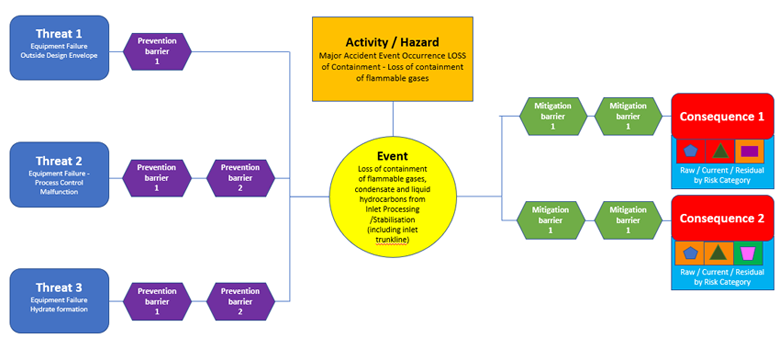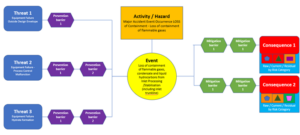Understanding the Risk Bow Tie Methodology: An Effective Approach to Risk Management
Introduction:
In today’s complex and interconnected world, organizations face a multitude of risks that can impact their operations, reputation, and bottom line. To effectively manage these risks, various methodologies have been developed. One such methodology gaining popularity is the Risk Bow Tie method. Derived from the concept of a bow tie, this visual representation of risk management helps organizations identify, assess, and mitigate risks comprehensively. In this article, we will explore the Risk Bow Tie methodology, its key components, and its benefits in facilitating effective risk management.
The Basics of Risk Bow Tie Methodology:
The Risk Bow Tie methodology provides a structured and visual approach to analyzing and managing risks. It focuses on understanding the causes, consequences, and control measures associated with specific risks, enabling organizations to proactively mitigate potential threats. The methodology is divided into three main components: the left side of the bow tie, the knot, and the right side of the bow tie.
1. Left Side of the Bow Tie:
The left side of the bow tie represents the causes and events that lead to the occurrence of a specific risk. It involves identifying and assessing the potential hazards, threats, and vulnerabilities that can trigger the risk. This analysis helps organizations gain a deeper understanding of the factors that contribute to the risk and enables them to implement preventive measures to minimize its likelihood.
2. Knot:
The knot at the center of the bow tie represents the occurrence of the risk event itself. It serves as a point of convergence between the causes and the consequences. Understanding this critical juncture is essential for organizations to respond effectively when a risk materializes. By having a clear understanding of the risk event, organizations can develop appropriate contingency plans, response strategies, and mitigation measures to minimize the impact of the risk.
3. Right Side of the Bow Tie:
The right side of the bow tie represents the potential consequences that may arise due to the occurrence of the risk event. It involves analyzing the potential impacts on various aspects such as safety, operations, environment, reputation, and finances. This analysis helps organizations assess the severity and magnitude of the consequences and develop measures to mitigate or control them. By visualizing the potential outcomes, organizations can better allocate resources and prioritize risk mitigation efforts.
If you are ready to implement better risk practices into your business, see our Risk Module or Contact us here for a demo.
Benefits of the Risk Bow Tie Methodology:
- Enhanced Risk Understanding: The visual nature of the bow tie diagram facilitates a comprehensive understanding of risks by illustrating the relationships between causes, events, and consequences. This enables organizations to identify potential weak points in their processes, systems, or controls and take proactive steps to strengthen them.
- Improved Risk Communication: The Risk Bow Tie methodology provides a clear and concise representation of risks, making it easier for stakeholders to comprehend and engage in risk discussions. It promotes effective communication among different departments, fostering a collaborative approach to risk management.
- Proactive Risk Mitigation: By analyzing the causes, events, and consequences associated with risks, organizations can develop targeted control measures to prevent or minimize their impact. This proactive approach enables timely risk mitigation and reduces the likelihood of incidents occurring.
- Continuous Improvement: The Risk Bow Tie methodology encourages a continuous improvement mindset. By regularly reviewing and updating the bow tie diagrams, organizations can identify emerging risks, reassess existing controls, and implement new measures to adapt to changing circumstances.
If you are ready to implement better risk practices into your business, see our Risk Module or Contact us here for a demo.







